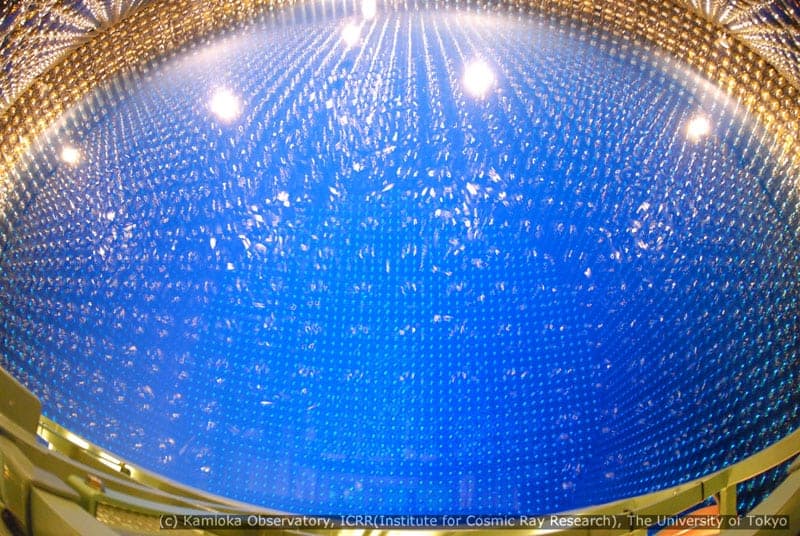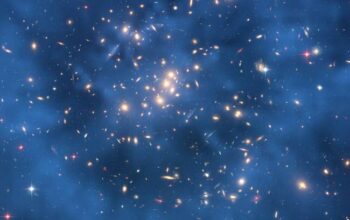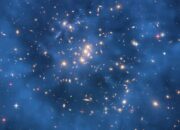The realm of particle physics has long been suffused with elusive entities that challenge our understanding of the universe, one of the most enigmatic being the neutrino. These nearly massless particles are not only abundant but also notoriously difficult to detect. For decades, physicists have been grappling with the implications of neutrino oscillation—the phenomenon wherein neutrinos switch between different types, or flavors, as they propagate through space. Recent observations have intensified both scholarly interest and the debate surrounding neutrino oscillations, suggesting the potential for hitherto unseen oscillation modes, potentially heralding new physics. Could these elusive oscillations be a prelude to groundbreaking revelations, or do they simply underscore the inadequacies of current theoretical frameworks?
Neutrinos possess three flavors: electron, muon, and tau. The notion of oscillation arises from quantum mechanical principles, illustrating that a neutrino born as one flavor can transform into another flavor over time. The original observation of neutrino oscillation emerged from experiments designed to measure solar and atmospheric neutrinos, leading to the discovery of their non-zero mass. This pivotal finding not only cemented the standard model of particle physics but also prompted profound questions about the nature of mass itself. What fuels the mystery surrounding neutrino oscillation? Can it be elucidated through an extension of the standard model, or does it imply more intricate physics at play?
The evidence mounting for previously unseen neutrino oscillations has emerged from a variety of experimental endeavors. The MINOS (Main Injector Neutrino Oscillation Search) experiment and subsequent upgrades have unveiled tantalizing hints that may suggest the existence of an unaccounted neutrino flavor or oscillation pathway. The observations gleaned from long-baseline experiments, combined with data from short-baseline neutrino experiments, have revealed discrepancies that prompt further scrutiny. Contrasting data sets challenge the conventional paradigms and call into question the completeness of our current models. What could possibly account for these discrepancies? Extraterrestrial phenomena, new particle interactions, or physics beyond the currently established paradigms are all potential candidates.
One particularly striking aspect of neutrino physics is the phenomenon of sterile neutrinos—hypothetical neutrinos that do not interact via the standard weak interactions associated with the other three flavors. The pursuit of sterile neutrinos adds another layer of complexity to the oscillation conundrum. If these sterile neutrinos exist, they could provide an explanation for various anomalies observed in neutrino experiments, particularly those involving short-baseline oscillations. However, the absence of experimental confirmation thus far raises an intriguing question: if sterile neutrinos are the key, why have we not yet observed their signature in decisive experiments?
The implications of these findings extend beyond mere academic curiosity; if indeed new oscillation modes are confirmed, they could reshape our comprehension of fundamental physics. Current theoretical frameworks could necessitate significant revisions to accommodate the newly proposed neutrino dynamics. Moreover, the realization of new physics could bridge gaps between the standard model and other theoretical constructs such as supersymmetry, string theory, or grand unified theories. Could the discovery of unseen neutrino oscillations unify previously disparate areas of particle physics? The potential for transformational insights is compelling.
While the excitement around these potential discoveries is palpable, skepticism remains a healthy component of scientific discourse. The propensity for experimental errors and the difficulty in interpreting complex data sets within the dynamic landscape of particle interactions invites caution. Both systematic and statistical uncertainties must be rigorously analyzed to ascertain the validity of supplementary oscillation hypotheses. As debates continue, researchers are harnessing advanced experimental methodologies and cutting-edge detection technologies to probe deeper into the neutrino enigma. Techniques such as liquid noble gas detectors and cutting-edge photodetectors have the potential to expose yet more nuances concerning neutrino behavior.
Furthermore, the interplay between cosmology and particle physics adds a multifaceted dimension to this discourse. The role of neutrinos in the evolution of the universe, particularly in the context of cosmic microwave background radiation and baryogenesis, underscores the significance of neutrino interactions in shaping the cosmos. Fluctuations in matter-antimatter asymmetries correlated with neutrino behavior can reveal interconnected mechanisms that govern the universe’s fate. Thus, an understanding of neutrino oscillations extends beyond terrestrial laboratories and into the cosmic tapestry.
As we stand at the precipice of potentially transformative discoveries, the question remains: will the observations of unseen neutrino oscillations catalyze a paradigm shift in our comprehension of the physical world? This tantalizing inquiry prods at the boundaries of current scientific understanding. Whether the future reveals a connection between these oscillations and a more profound understanding of the fabric of reality will depend on the diligent efforts of the scientific community in testing the limits of existing paradigms. The universe, with its boundless mysteries, awaits answers that could significantly alter our notion of reality.
Ultimately, the exploration of neutrino oscillations represents a quintessential example of the dynamic and evolving nature of science. As experimental evidence mounts, researchers are poised to confront formidable challenges, but also to embrace the exhilarating possibility of uncovering new truths about the universe—a venture that may redefine our place within it.










